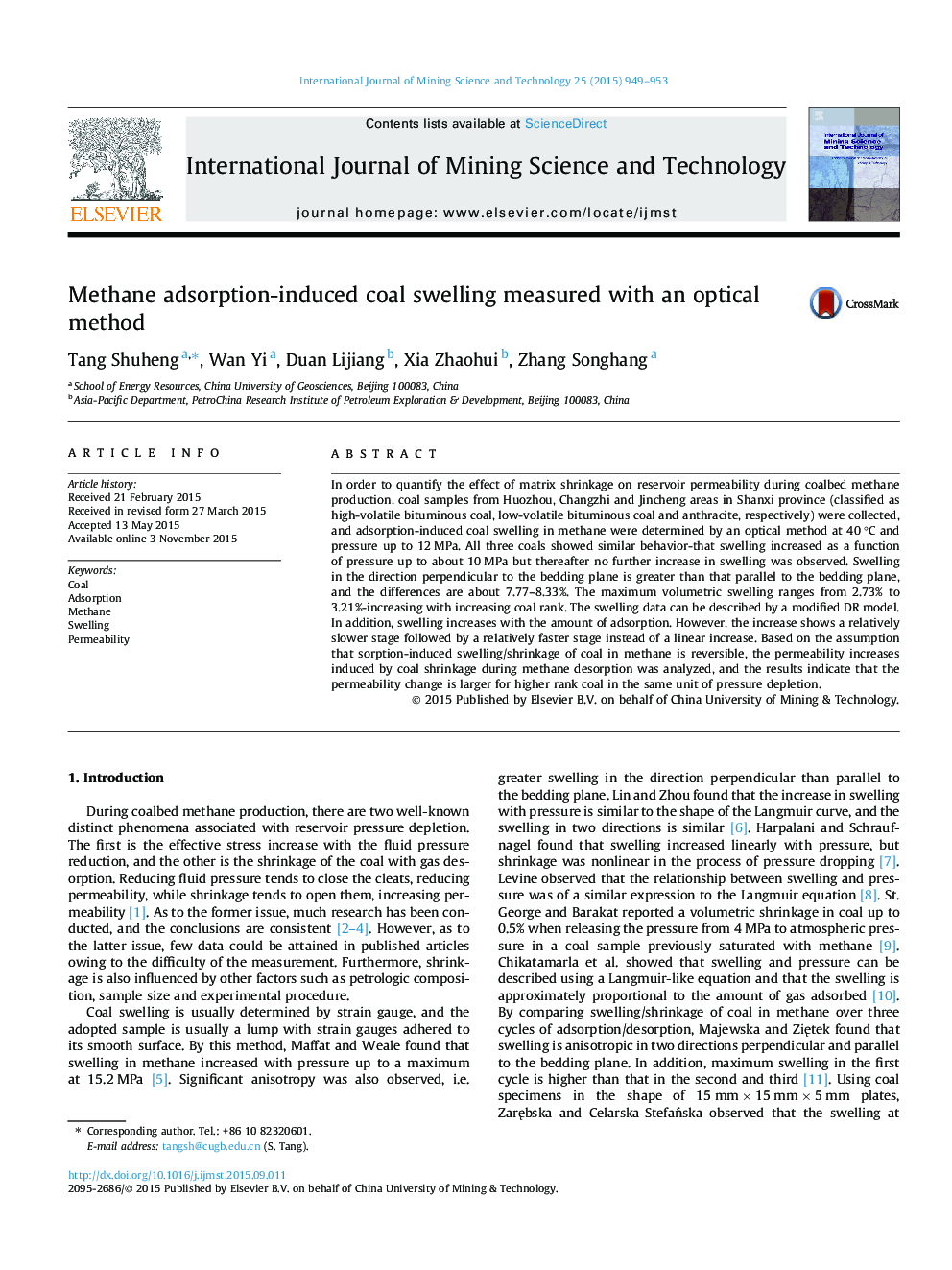| Article ID | Journal | Published Year | Pages | File Type |
|---|---|---|---|---|
| 275076 | International Journal of Mining Science and Technology | 2015 | 5 Pages |
In order to quantify the effect of matrix shrinkage on reservoir permeability during coalbed methane production, coal samples from Huozhou, Changzhi and Jincheng areas in Shanxi province (classified as high-volatile bituminous coal, low-volatile bituminous coal and anthracite, respectively) were collected, and adsorption-induced coal swelling in methane were determined by an optical method at 40 °C and pressure up to 12 MPa. All three coals showed similar behavior-that swelling increased as a function of pressure up to about 10 MPa but thereafter no further increase in swelling was observed. Swelling in the direction perpendicular to the bedding plane is greater than that parallel to the bedding plane, and the differences are about 7.77–8.33%. The maximum volumetric swelling ranges from 2.73% to 3.21%-increasing with increasing coal rank. The swelling data can be described by a modified DR model. In addition, swelling increases with the amount of adsorption. However, the increase shows a relatively slower stage followed by a relatively faster stage instead of a linear increase. Based on the assumption that sorption-induced swelling/shrinkage of coal in methane is reversible, the permeability increases induced by coal shrinkage during methane desorption was analyzed, and the results indicate that the permeability change is larger for higher rank coal in the same unit of pressure depletion.
